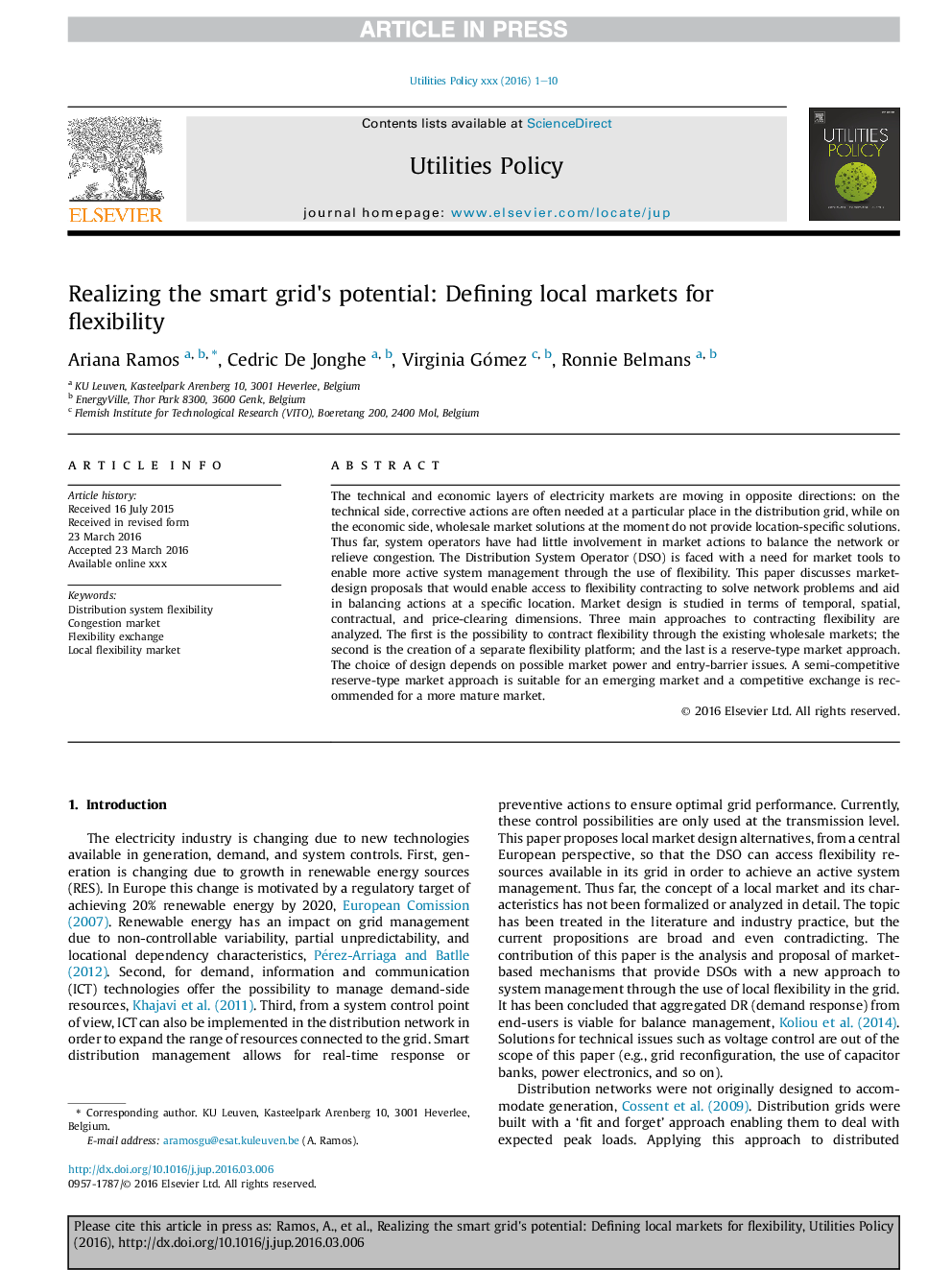| Article ID | Journal | Published Year | Pages | File Type |
|---|---|---|---|---|
| 7411430 | Utilities Policy | 2016 | 10 Pages |
Abstract
The technical and economic layers of electricity markets are moving in opposite directions: on the technical side, corrective actions are often needed at a particular place in the distribution grid, while on the economic side, wholesale market solutions at the moment do not provide location-specific solutions. Thus far, system operators have had little involvement in market actions to balance the network or relieve congestion. The Distribution System Operator (DSO) is faced with a need for market tools to enable more active system management through the use of flexibility. This paper discusses market-design proposals that would enable access to flexibility contracting to solve network problems and aid in balancing actions at a specific location. Market design is studied in terms of temporal, spatial, contractual, and price-clearing dimensions. Three main approaches to contracting flexibility are analyzed. The first is the possibility to contract flexibility through the existing wholesale markets; the second is the creation of a separate flexibility platform; and the last is a reserve-type market approach. The choice of design depends on possible market power and entry-barrier issues. A semi-competitive reserve-type market approach is suitable for an emerging market and a competitive exchange is recommended for a more mature market.
Related Topics
Physical Sciences and Engineering
Energy
Energy (General)
Authors
Ariana Ramos, Cedric De Jonghe, Virginia Gómez, Ronnie Belmans,
